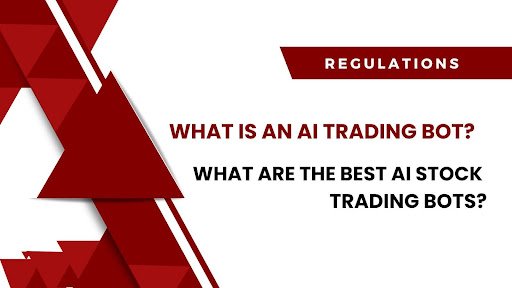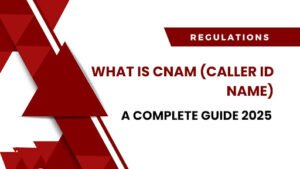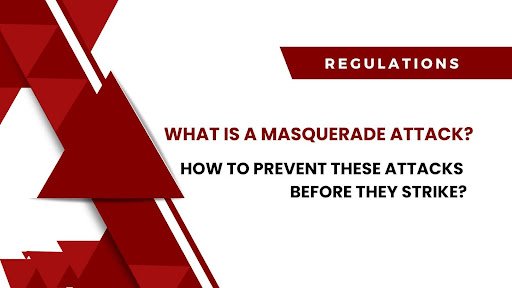Named Entity Recognition (NER) technology transforms unstructured data and words into actionable insights.
This is empowering visual assistants, medical research, businesses, and organizations. Natural language processing(NLP) is the key component of NER that identifies and classifies the entities, organizations, and locations with precision, replacing humans.
It can achieve up to 93.39% F1-score in state-of-the-art systems, which is below 4% of human performance. NER has become an essential technique to extract meaning from the textual deluge, more than 2.5 quintillion bytes of data generated daily using NER.
This enables different applications, including search engines, fraud detection, and news analysis in real time.
NER bridges the gap by converting text into structured data and human-to-machine understanding at a time.
According to a report by Verified Market Research, the global NLP market is expected to reach $65.38 billion by 2030. The compared rate was $13.17 billion in 2021.
In this blog, we’ll explore what NER is, how it works, and the best tools and frameworks.
What is Named Entity Recognition?
Named Entity Recognition (NER) is an NLP technique that bridges between unstructured text and unstructured data.
This technique scans textual data to identify and extract elementary keywords based on the semantic types. The machines shift large amounts of textual data to extract information and then categorize the words into different forms.
These Semitic types are also known as entities. The entity can be an individual, a place, a company, a noun, a verb, or a phrase. After identifying the entities with sea words, NER transforms the process to textual data to use further.
| 📌The most common types of entities involve Names of people and products (such as Elon Musk) Dates Quantities Events Teams Organizations Percentages Currency Figures Locations Custom categories Monetary values NER includes the detection and categorization of historic information referred to as named entities.For ExampleIn a sentence, Clark bought 200 shares of Acme Corp. in 2005. NER tags “Clark” as (a person), “Acme Corp.” as an (organization), and “2005” as (Time) |
How NER Works?
It is easy for humans to understand entities in the form of text and paragraphs, but it is difficult for computers or machines to understand.
The system or machines identify the entities in the first place. After identifying them, they classify them and apply modern NLP techniques. Here’s a brief explanation of how NER works.
| 📌The Purpose OF NER The main objective of NER is to Combine unstructured text Identify the chunks as named entities Classification of the entities into categories The conversion of unstructured text to a structured form makes data actionable, and it offers data analysis, information extraction, and the construction of knowledge graphs. |
Outline of NLP Workflow
Natural Language Processing (NLP) is a technique that automates text analysis, improves customer engagement, and reduces manual efforts regarding language-based workflows.
NLP provides a structure and set of rules established for a mechanism to extract the possible forms of words from a sentence, paragraph, or phrase. Different techniques are used to extract basic and meaningful information
Tokenization
In this step, before the entity recognition, texts are split into tokens. The tokens can be words, phrases, or sentences. This division makes the words easier to understand.
For Example
He was looking for a job. This sentence will be divided into tokens like “He”, “a”, “Job”, “For”, Looking, “was.”
Entity classification
The entities are detected in this step using linguistic rules or statistical methods. The dates, places, and other formats are recognized in this step.
POS Tagging
In this step, each word is assigned a part of speech, for instance, noun, verb, and pronoun, etc.
Removal of stop words
Words that are not important and make no sense in the context are known as stop words. These words can be a, the, of etc. These words are removed in this step.
Stemming
The stemming process involves the extraction of base words by chopping off the end letters.
For Example, the words like “learning” and “learned” will reduce to the base word (Learn).
Lemmatization
The better root words of the context of the text are generated in the Lemmatization.
For Example
Lemmatizing the word ‘learning’ will generate ‘learn’ while stemming might generate ‘lea.’
| 📌Different toolkits help to develop a named entity recognizer, including Python-based NLTK & SpaCy libraries. Machine learning algorithms are used to train and improve NER models for better results. |
Methods of Named Entity Recognition
Different methods have been developed for Named Entity Recognition (NER) over the years.
Every method has a unique style of extracting and categorizing named entities. Every method poses challenges as well. Here’s an overview of all the methods
| 📌Why Is NER Important in NLP? NER acts as a critical component within Natural Language Processing (NLP). NER is used in different applications. NER is important in NLP because It transmutes Unstructured Text into Structured Data It improves Contextual Understanding It enhances the Information Retrieval and Search It empowers the Relationship and Knowledge Extraction It pushes Business and Industry Applications to success It provides Sentiment analysisIt helps in Document summarization |
Rule-based Method
The rule-based method operates on predefined, human-written rules. The identification and classification of entities are done based on the linguistic patterns, expressions, and vocabularies.
Though they are effective in specialized fields. For example, extracting medical terms from clinical text mining on a large scale is difficult. The medical sector can struggle with the large database and predefined rules.
Statistical Method
Moving next from manual rules, statistical methods engage with advanced models, including Hidden Markov Models (HMM) or Conditional Random Fields (CRF).
They anticipate entities based on the probability of derived data. These methods operate well with large databases.
They excel at diverse text handling, text inputs, and their success depends on the data entered.
Machine Learning Method
A step more advanced use of the Machine learning method. This method uses algorithms based on decision trees and support vector machines.
They learn through predicted named entities and labeled data. Their adoption is more in modern NER systems because of their data handling of large databases. These methods can be more demanding for significant data labels and computing.
Deep Learning Method
The current frontline method is deep learning. It has the power of neural networks. Recurrent Neural Networks (RNN) and transformers are the two best duos for their long-term abilities.
Their potency lies in capturing long-term dependencies in text. The trade-off? They require a lot of computing power to run well.
Hybrid Method
There is no universal solution to Named Entity Recognition (NER); it does not fit all situations. The hybrid methods are getting popular.
This method uses combined statistical and machine learning approaches to perform at its peak. This method is valuable in exciting entities with diverse sources. This method offers flexibility, however, it’s complex to maintain and implement.
| 📌Why Entity Extraction Matters? Entity extraction uncovers the key connections of the large datasets. It allows investigators to reveal connections and turn unstructured text into actionable insights. ~Sintelix |
Best NER and Entity Extraction Tools
If you are looking for the best entity recognition tools. Here’s a quick rundown of the best options you can opt.
| Tool Name | Description |
| Sintelix | A premier solution, 28 built-in entities200+ data connectors, optimized for law enforcement and use cases.Provides diagram visualization |
| Google Cloud Natural Language | It is a Multilingual supportIt has advanced NLP featuresIt provides predefined entity types with limitations. |
| spaCy | It is a Fast Python libraryIt has a developer-friendly APIProficiency in English text with limited multilingual support |
| Stanford NER | It is based on Research-focused JavaIt is a multilingual, ideal for academic projectsHigh accuracy but slow in speed |
| IBM Watson NLU | It has a User-friendly cloud APIIt provides recognition beyond standard entitiesExcel in business applications and accuracy. |
| DeepPavlov | It has an Open-source frameworkIt supports English and RussianBest for high accuracy |
| Azure Form Recognizer | It provides Document-focused servicesIt has integration with OCR.It extracts images and PDFsBetter for structured documents than NER in general |
| Azure Cognitive NER | It provides Text-based entity recognitionSuitable for short texts and Limited characters |
| BERTopic/Top2Vec | It’s an Open-source topic modelingIt provides entity extraction through clustering |
Final Thoughts
NER NLP is an influential technique for entity extraction. NER transforms the unstructured text to structured knowledge.
You can use different tools spaCy, Stanford NER, or BERT, for entity resolution. Choosing tools depends on the project you are working on with other use cases, language needs, and scalability requirements.
FAQs:
What is NER NLP?
Named Entity Recognition (NER) is an NLP technique that bridges between unstructured text and unstructured data. This technique scans textual data to identify and extract elementary keywords based on the semantic types. The machines shift large amounts of textual data to extract information and then categorize the words into different forms
What does NER do in NLP?
It extracts structured information from unstructured information for tasks like search optimization.
What are the 4 types of NLP?
The four types of NLP include
- Syntax analysis
- Semantic analysis
- Information extraction
- Text classification
What are POS and NER in NLP?
In the POS tagging step, each word is assigned a part of speech, for instance, noun, verb, and pronoun etc. While NER deals with the Dates, Quantities, Events, Teams, Organizations, Percentages, Currency, Figures, Locations, and Custom categories
What is an example of a NER model?
In a sentence, Clark bought 200 shares of Acme Corp. in 2005. NER tags “Clark” as (a person), “Acme Corp.” as an (organization), and “2005” as (Time).
People Also Read:
What Is Reverse Email Lookup And How Does It Work?
AI in Banking: Trends, Challenges, And Future Directions
How NYDFS Protects Consumer Data Through Rigorous Cybersecurity Rules













+ There are no comments
Add yours